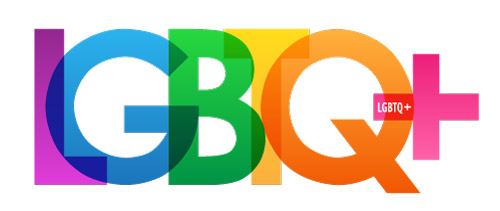The pandemic gives the church a chance to care for people on the margins
by Gail Strange | Presbyterian News Service

LOUISVILLE — In a matter of a few weeks, the COVID-19 pandemic has changed the world from what we once knew to something we hardly recognize. Most Americans are sheltering in place and practicing social distancing. Face masks and gloves have become part of one’s everyday attire. Across social media the #StayHomeStaySafe hashtag is trending more and more each day.
Staying at home, wearing gloves and masks in public, and social distancing are inconvenient but practical ways to protect oneself and others. However, there are those in communities across the country for whom these protective measures aren’t as doable. For the marginalized, vulnerable and underserved population, these safeguards can be more difficult.
The LGBTQIA community is one such population. The Rev. Shanea Leonard, associate for Gender and Racial Justice in the Racial Equity & Women’s Intercultural Ministries at the Presbyterian Mission Agency, says, “Statistically, this group tends to occupy employment that is necessary and cannot stay home, thus putting them in harm’s way.”

The Rev. Shanea D. Leonard spoke to the Presbyterian delegation to the United Nations Commission on the Status of Women in March 2019. (Photo by Rich Copley)
“The homeless population in this country is disproportionately made up of LGBTQIA adults and teens,” Leonard said, “making them also more susceptible to infection and lack of care and treatment. And finally, this population tends to make up a large number of citizens who may be underemployed, making virtual, at-home work and living not an option. Poor access to the advantages of WiFi, salaried unaffected wages, and stable housing puts this population disproportionately at risk for being infected, carrying, and dying from COVID-19.”
The Human Rights Campaign’s (HRC) latest research paper, “The Lives and Livelihoods of Many in the LGBTQ Community are at Risk Amidst COVID-19 Crisis,” states that LGBTQ Americans are more likely than the general population to live in poverty and lack access to adequate medical care, paid medical leave, and basic necessities during the pandemic. HRC estimates there are nearly 14 million LGBTQ adults and 2 million LGBTQ youth in the United States. Based on HRC Foundation’s analyses of General Social Survey (GSS) data, more than 5 million work in jobs that are more likely to be impacted by COVID-19. This includes those working in restaurants and other food service industries, hospitals, K-12 and higher education and retail outlets.
An open letter concerning the coronavirus and the LGBTQ+ communities written by the National LGBT Cancer Network and signed by more than 100 organizations brings attention to several factors that speak to the greater risk of complications from COVID-19 faced by the LGBTQ+ community.
The letter points out that members of the LGBTQ+ communities are among those who are particularly vulnerable to the negative health effects of this virus. It goes on to note that the increased vulnerability is a direct result of three factors:
- The LGBTQ+ population uses tobacco at rates that are 50% higher than that of the general population. COVID-19 is a respiratory illness that has proven particularly harmful to smokers.
- The LGBTQ+ population has higher rates of HIV and cancer, which means a greater number may have compromised immune systems, leaving them more vulnerable to COVID-19 infections.
- LGBTQ+ people continue to experience discrimination, unwelcoming attitudes, and lack of understanding from providers and staff in many health care settings. As a result, many are reluctant to seek medical care except in situations that feel urgent — and perhaps not even then.
The letter further state that “there are more than 3 million LGBTQ+ older people living in the United States. LGBTQ+ elders are already less likely than their heterosexual and cisgender peers to reach out to health and aging providers, like senior centers, meal programs, and other programs designed to ensure their health and wellness, because they fear discrimination and harassment. The devastating impact of COVID-19 on older people — the current mortality rate is at 15% for this population — makes this a huge issue for the LGBTQ+ communities as well.”
“This is a group the church must support,” said Leonard. “Historically the church and the LGBTQIA community have had a divide. But in the wake of this pandemic it gives the church an opportunity to really care for some of the most marginalized folks in our community. COVID-19 hits the LGBTQIA community in ways that most people don’t think about. A large majority of the homeless youth living on our streets are queer youth. For people who are a good portion of the homeless population, that makes the LGBTQ more susceptible to the virus. “
Leonard says if LGBTQIA individuals live in cities where there’s little protection for them in state laws or local ordinances, these individuals are more susceptible to bigotry based on who they are and whom they love. Without legal protections against employment discrimination, people in the LGBTQIA community can have a greater chance of being deemed an essential worker and thus putting themselves in harms ways.
“So, the church taking care of some of society’s most vulnerable and marginalized is the church doing the work of Christ,” Leonard said.
![]() You may freely reuse and distribute this article in its entirety for non-commercial purposes in any medium. Please include author attribution, photography credits, and a link to the original article. This work is licensed under a Creative Commons Attribution-NonCommercial-NoDeratives 4.0 International License.
You may freely reuse and distribute this article in its entirety for non-commercial purposes in any medium. Please include author attribution, photography credits, and a link to the original article. This work is licensed under a Creative Commons Attribution-NonCommercial-NoDeratives 4.0 International License.